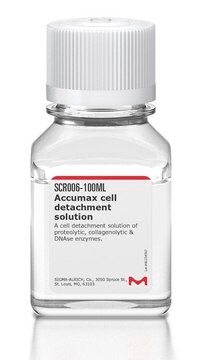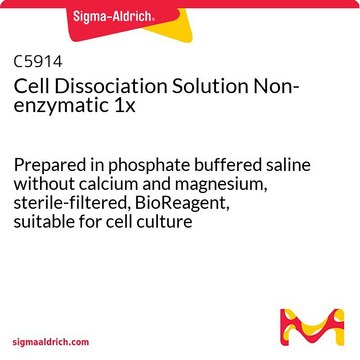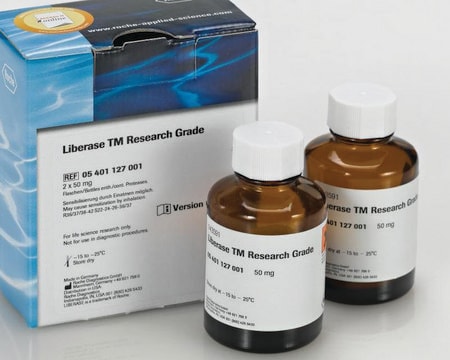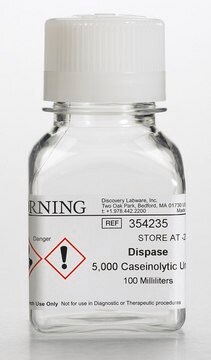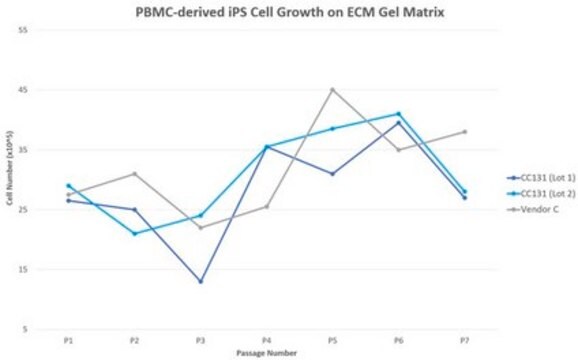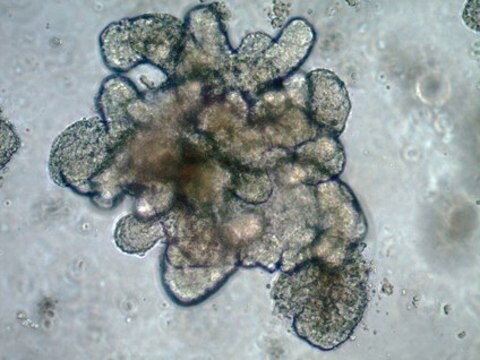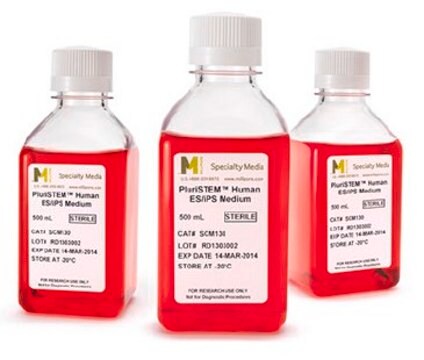A7089
Accumax™ solution
sterile-filtered, suitable for cell culture
Synonym(s):
Cell detachment solution
About This Item
Recommended Products
sterility
sterile-filtered
Quality Level
form
solution
concentration
1 ×
technique(s)
cell culture | mammalian: suitable
single cell analysis: suitable
pH
6.8-7.8
shipped in
dry ice
storage temp.
−20°C
Application
- for detaching single walled carbon nanotubes from the extracellular matrix (ECM) in epithelial cells
- for dissociation of retinal pigmented epithelial cells prior to passaging
- for dissociation of islets from pancreas
Biochem/physiol Actions
Features and Benefits
Caution
Formula variant
Preparation Note
Legal Information
Related product
Storage Class
10 - Combustible liquids
wgk_germany
WGK 2
flash_point_f
Not applicable
flash_point_c
Not applicable
Certificates of Analysis (COA)
Search for Certificates of Analysis (COA) by entering the products Lot/Batch Number. Lot and Batch Numbers can be found on a product’s label following the words ‘Lot’ or ‘Batch’.
Already Own This Product?
Find documentation for the products that you have recently purchased in the Document Library.
Customers Also Viewed
Related Content
Testing the Category Page
Testing the Strat 16295 Ticket
Testing the custom pdp page
Testing the tech article page
Our team of scientists has experience in all areas of research including Life Science, Material Science, Chemical Synthesis, Chromatography, Analytical and many others.
Contact Technical Service
